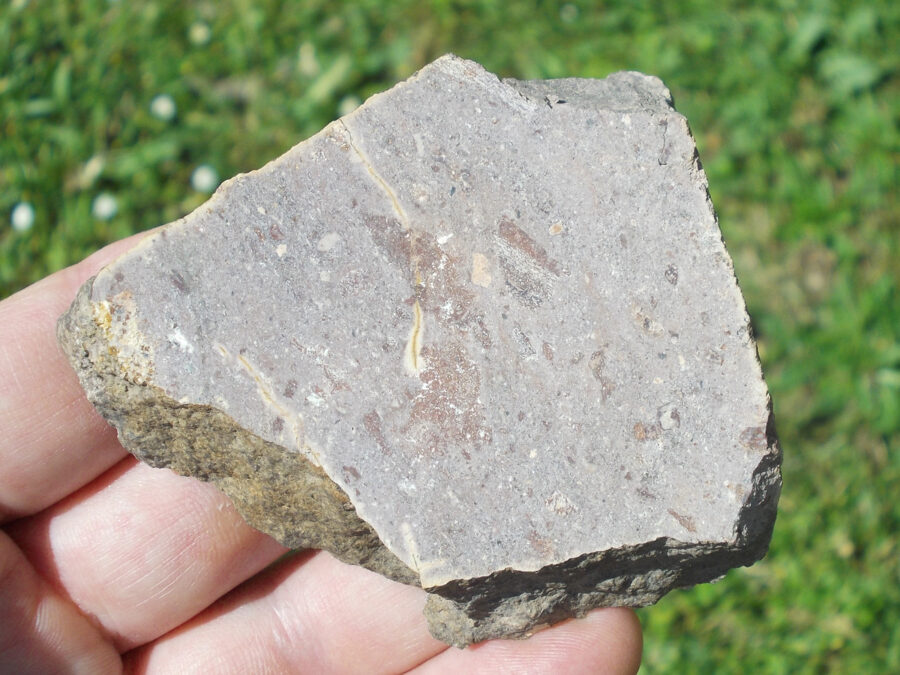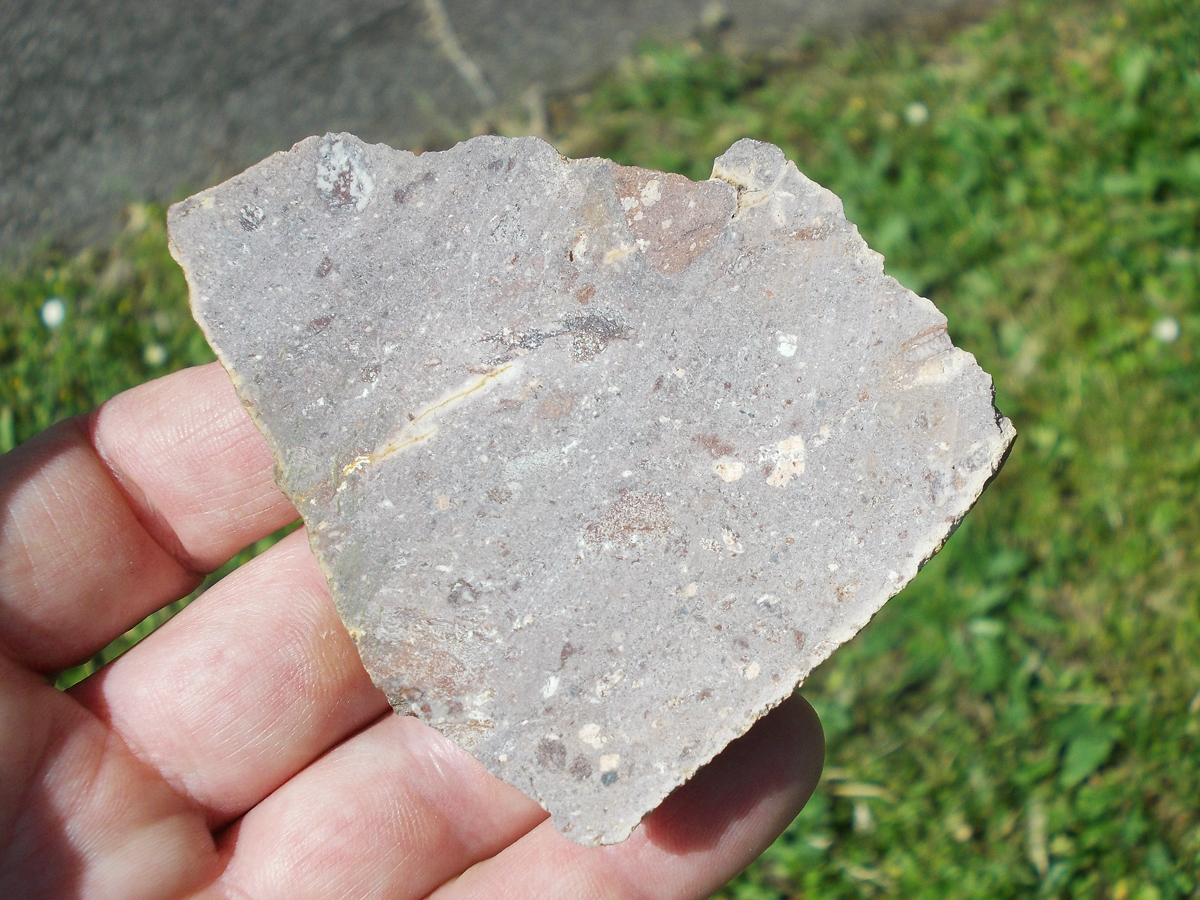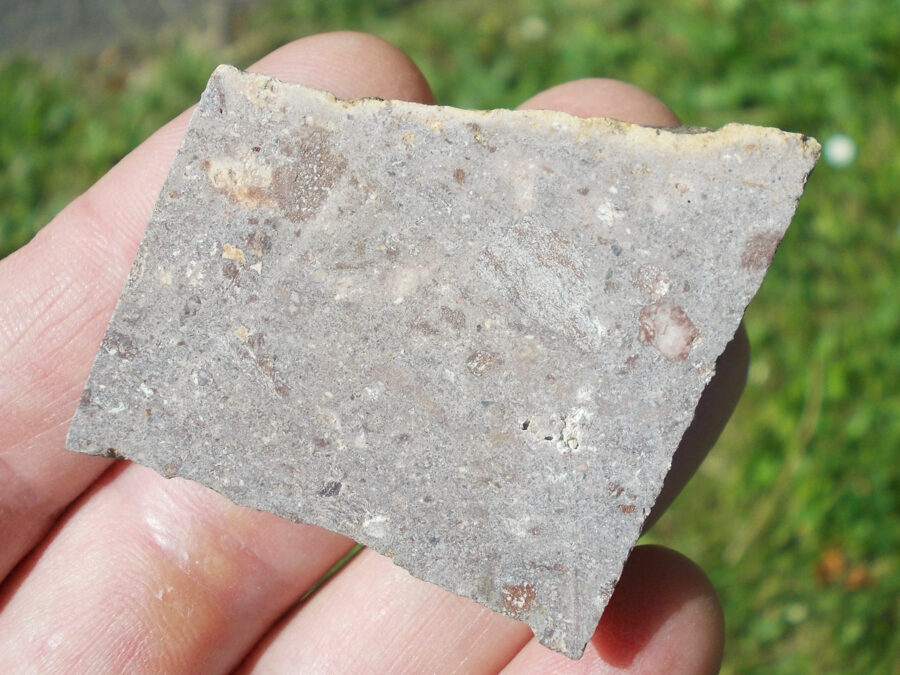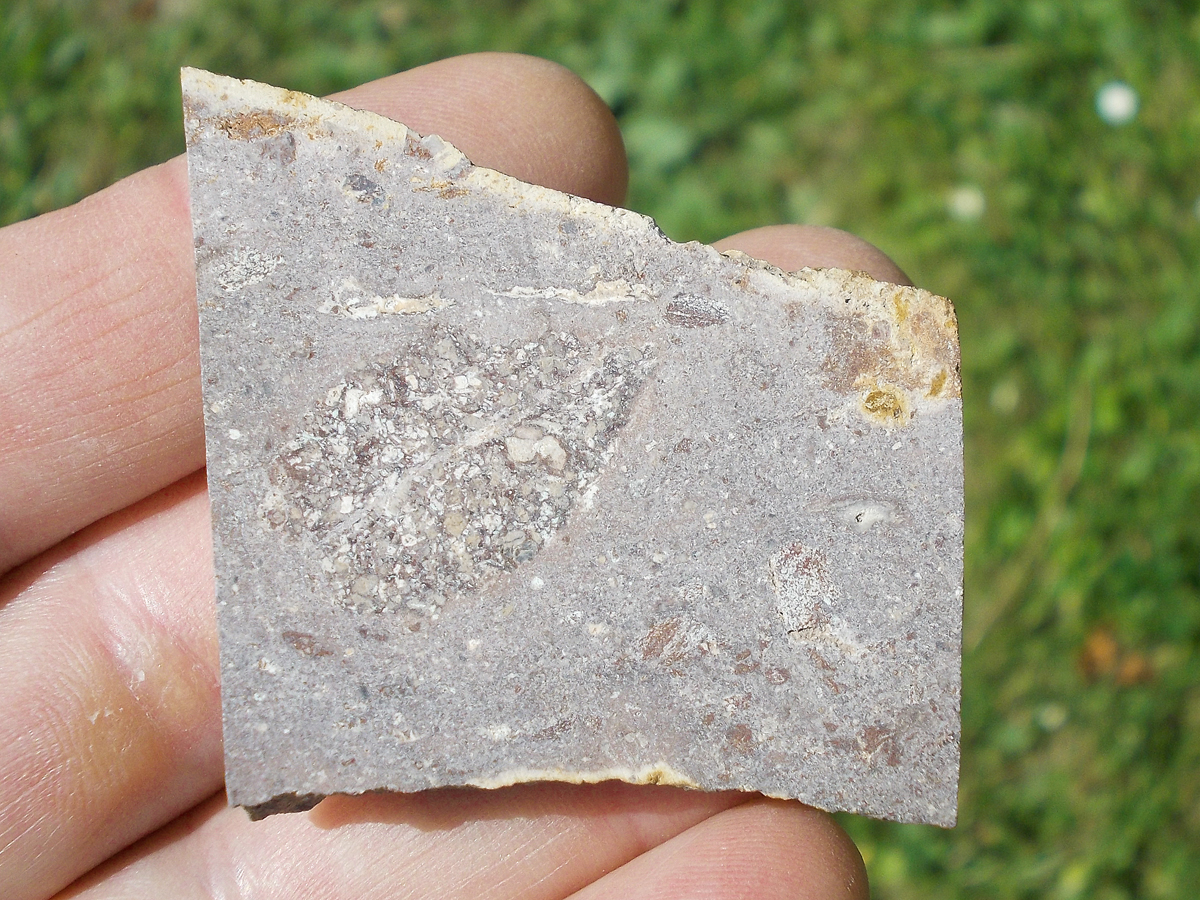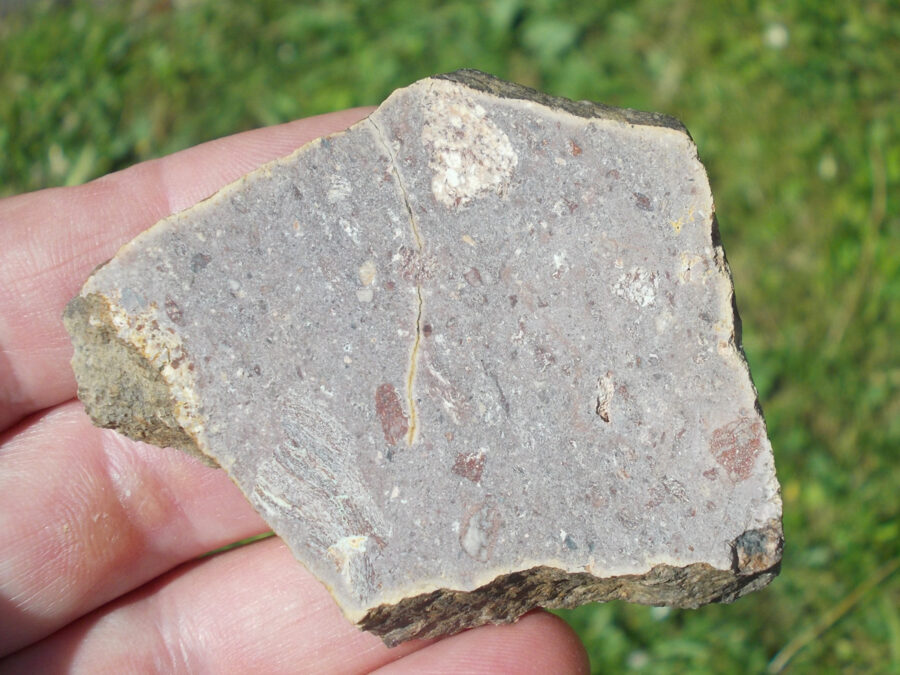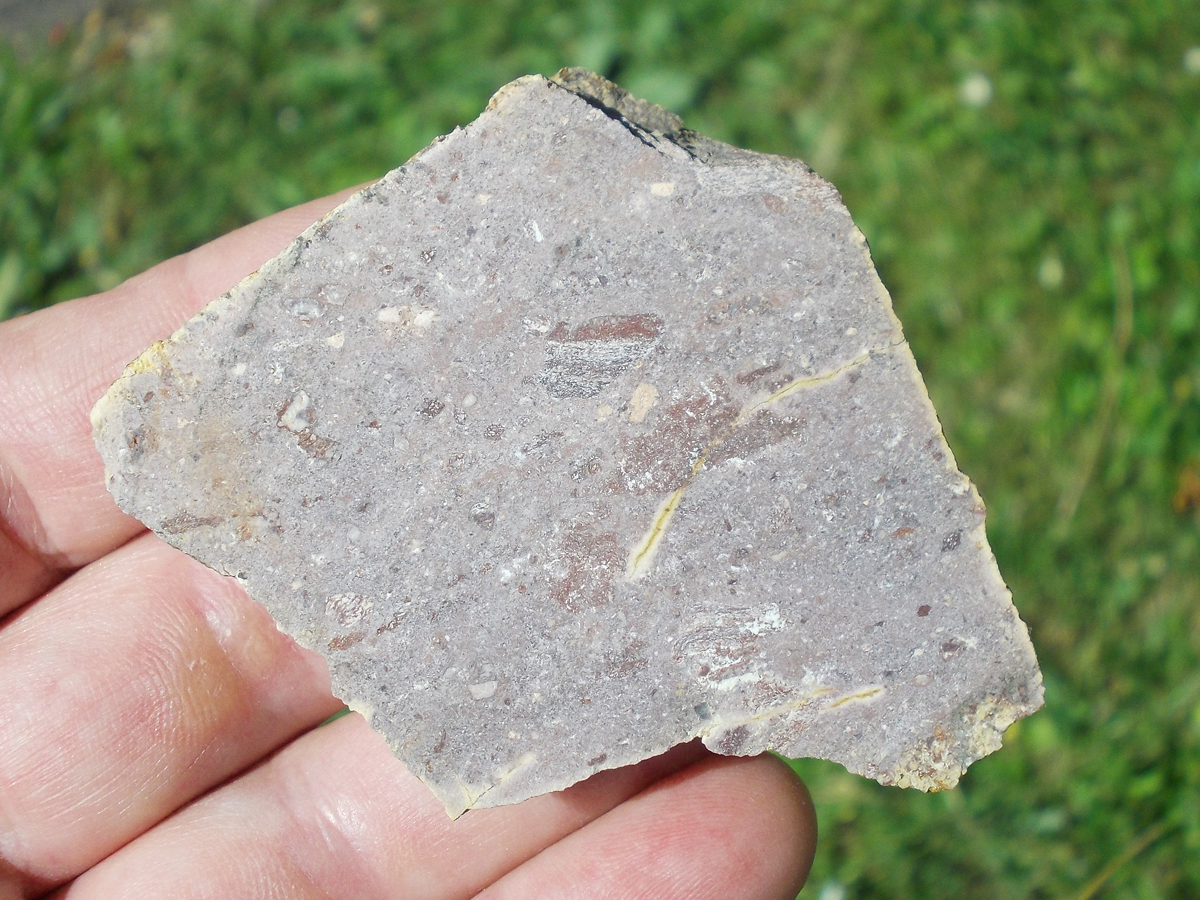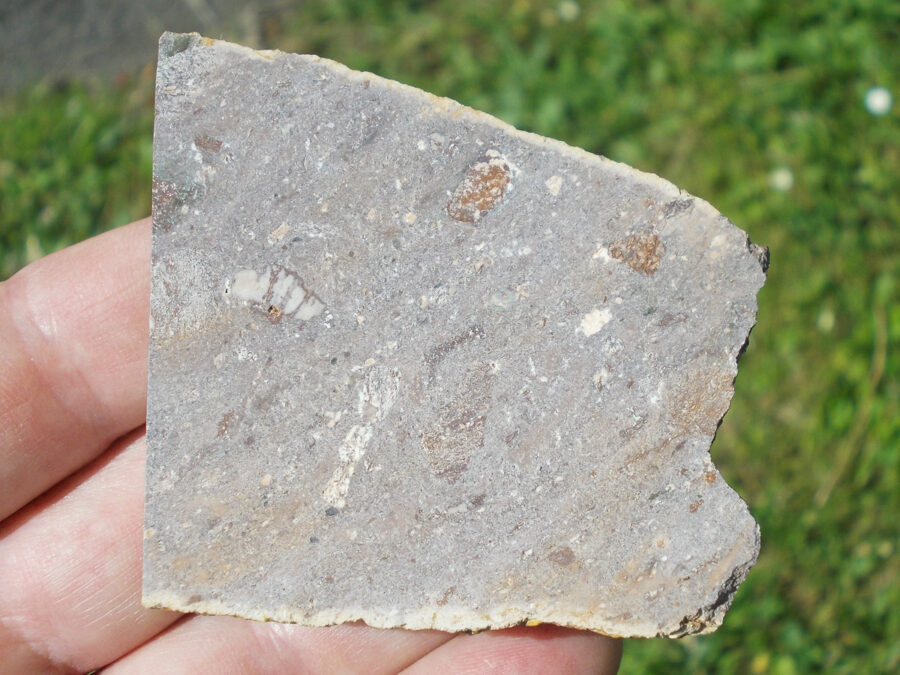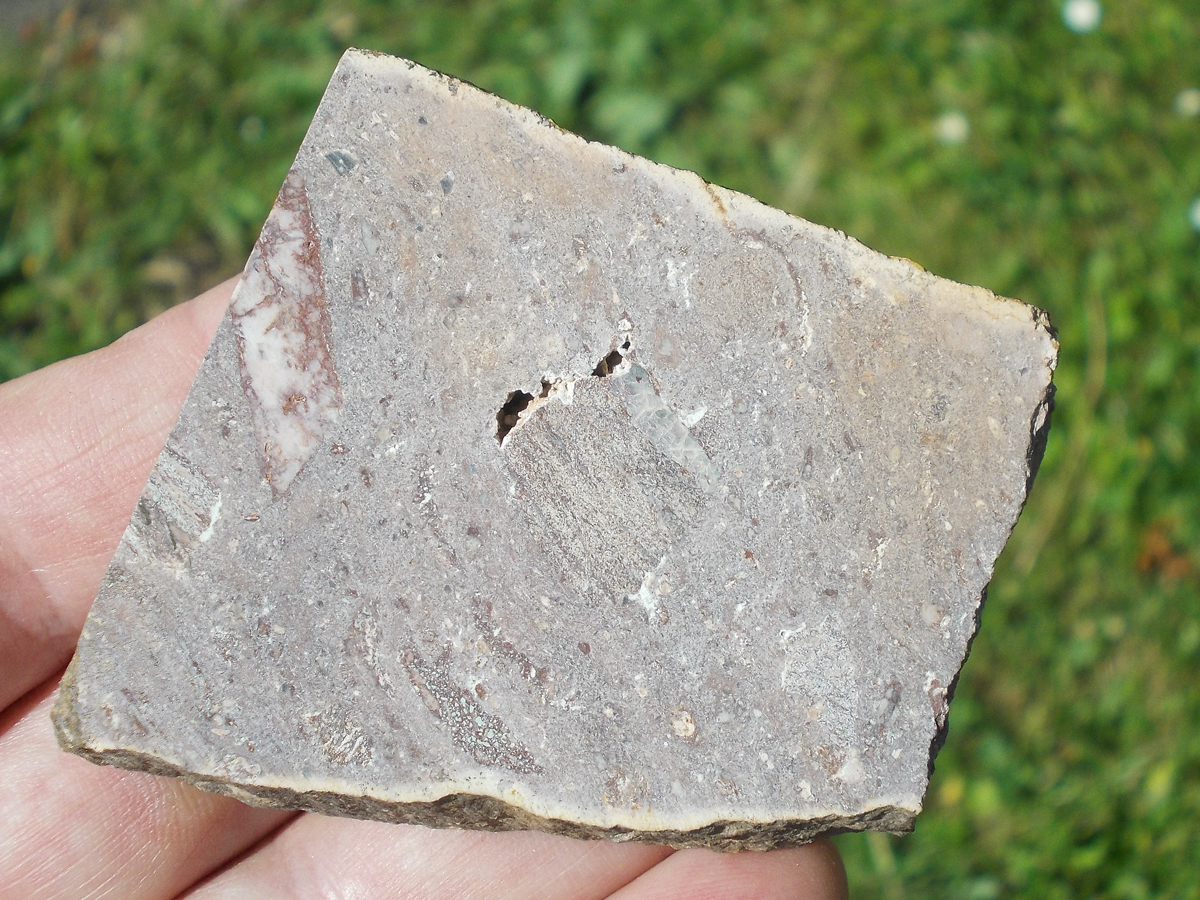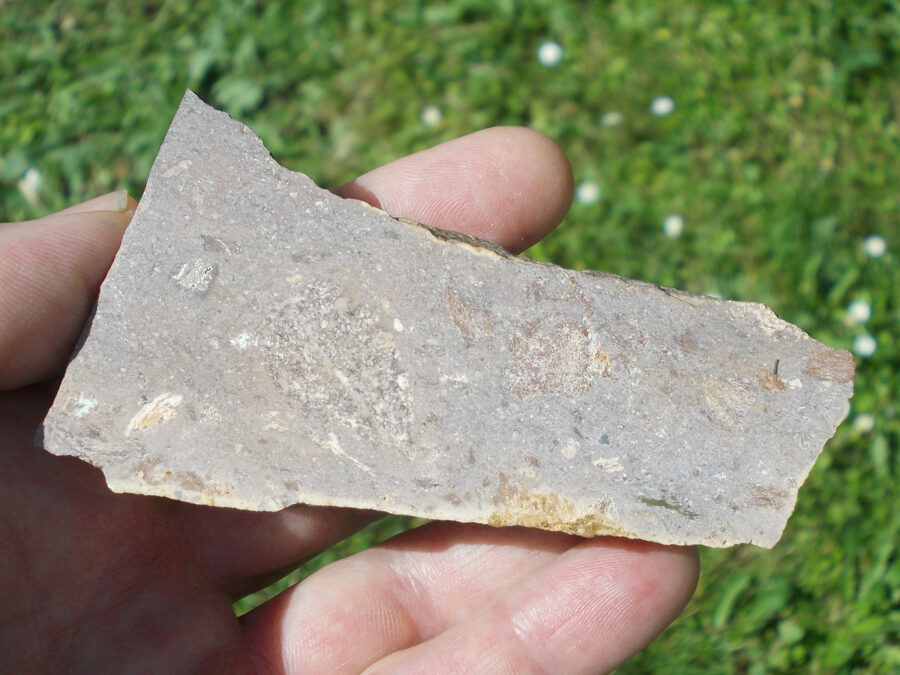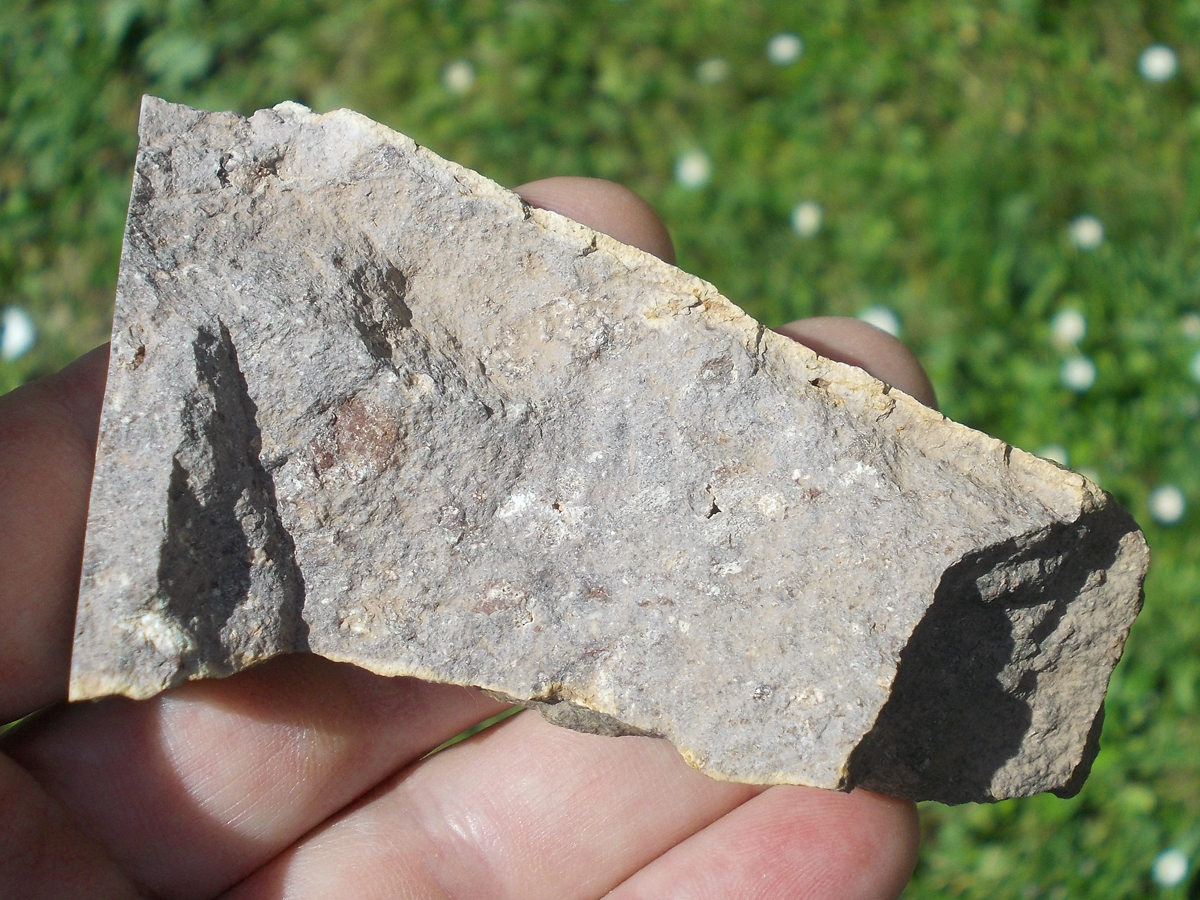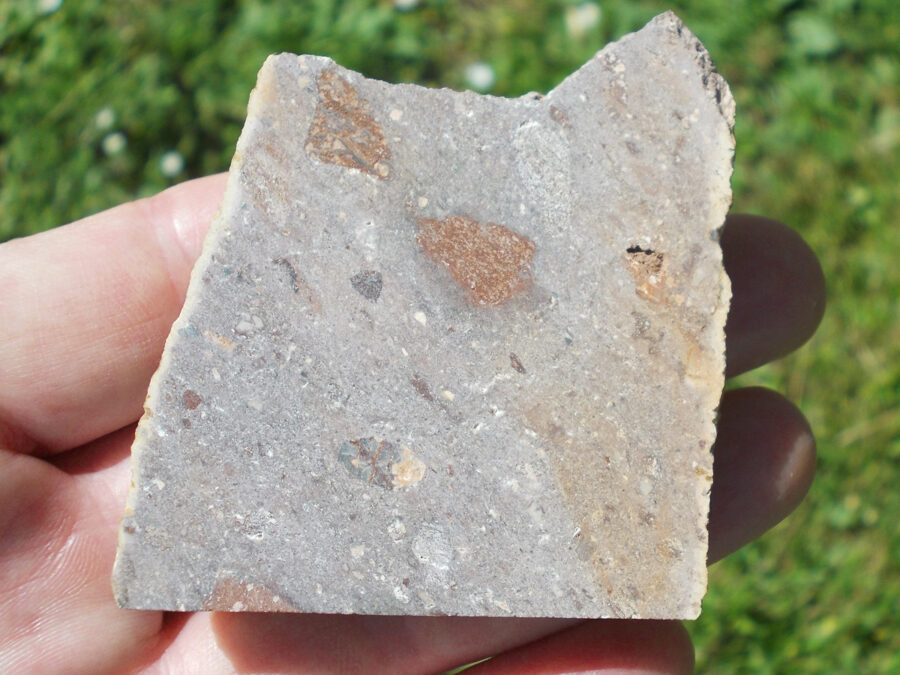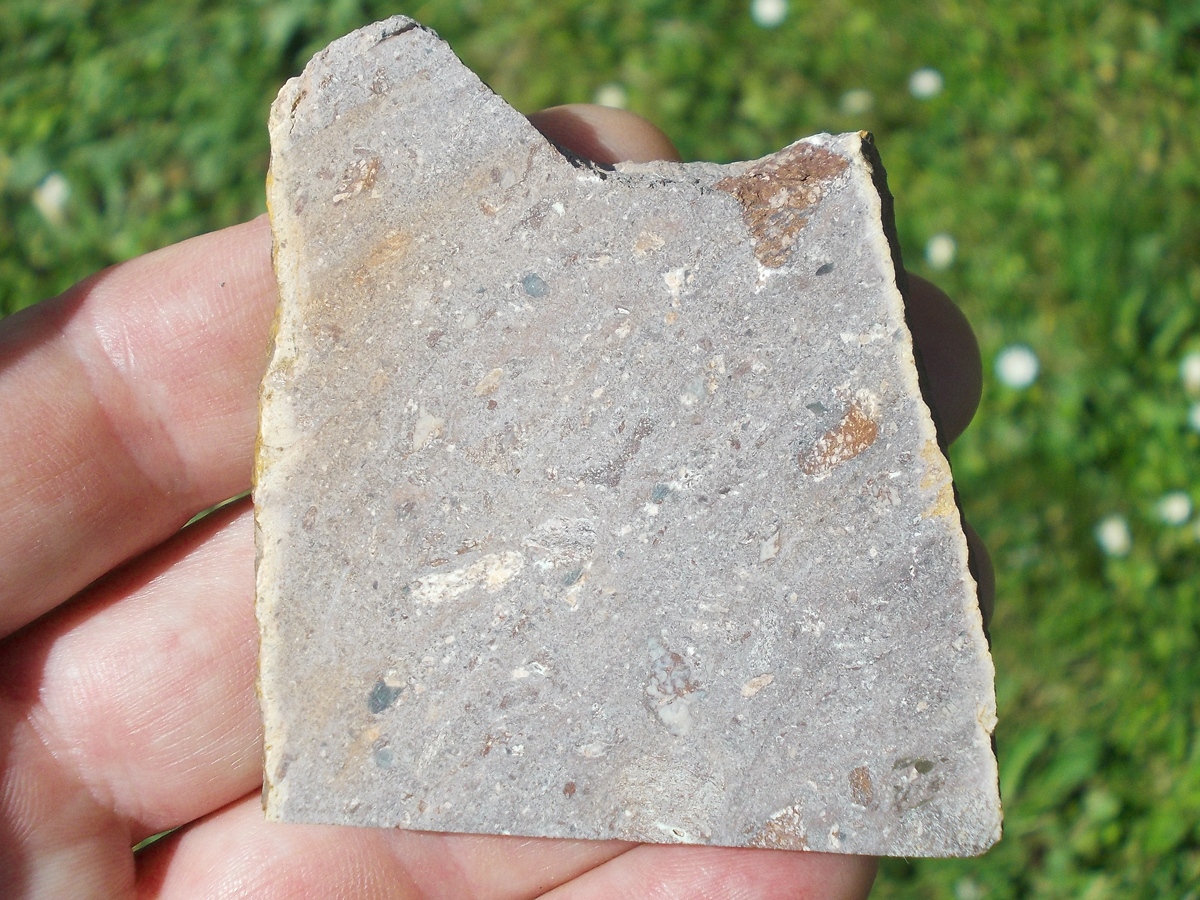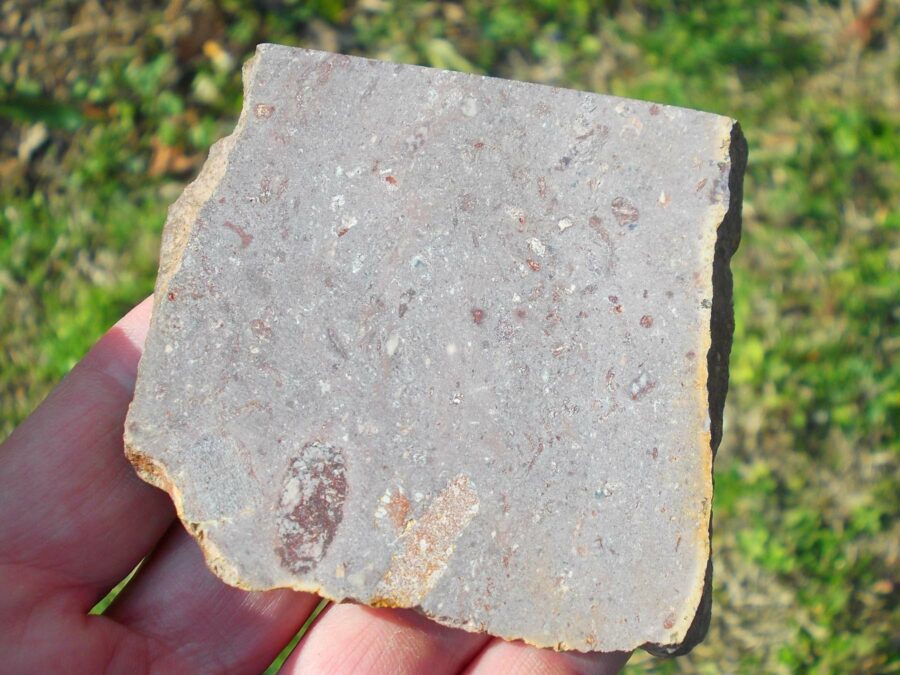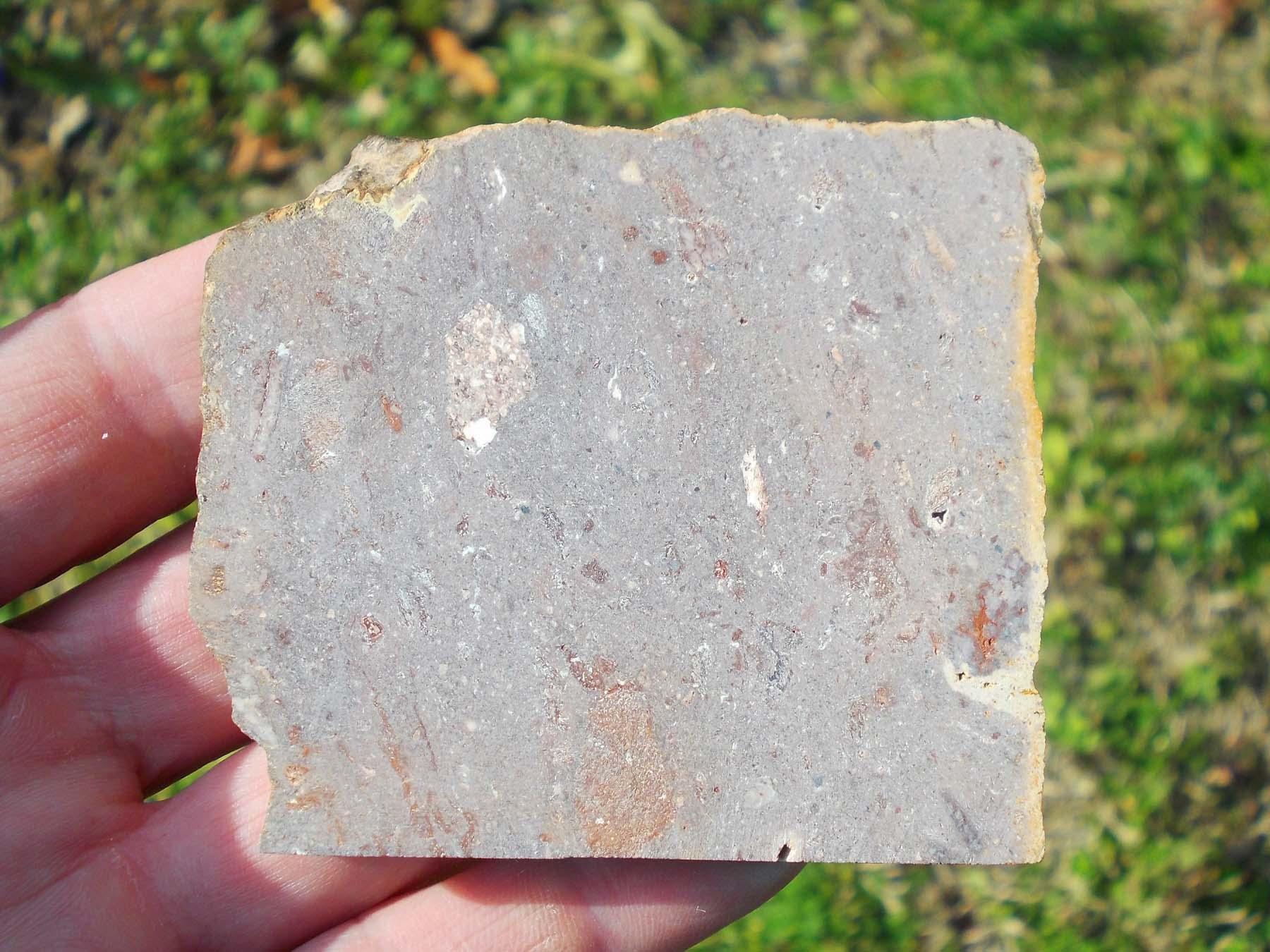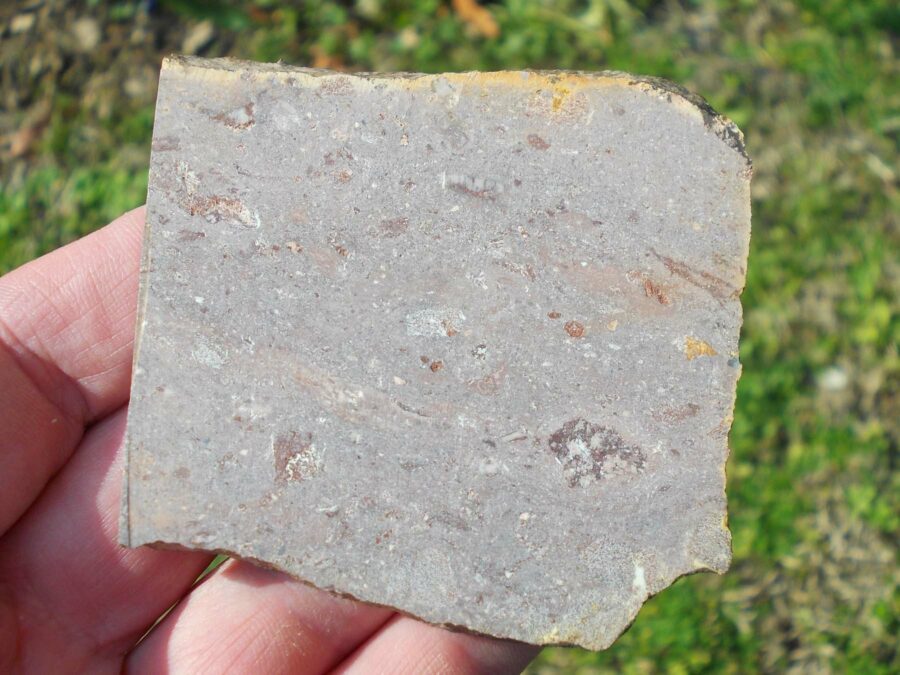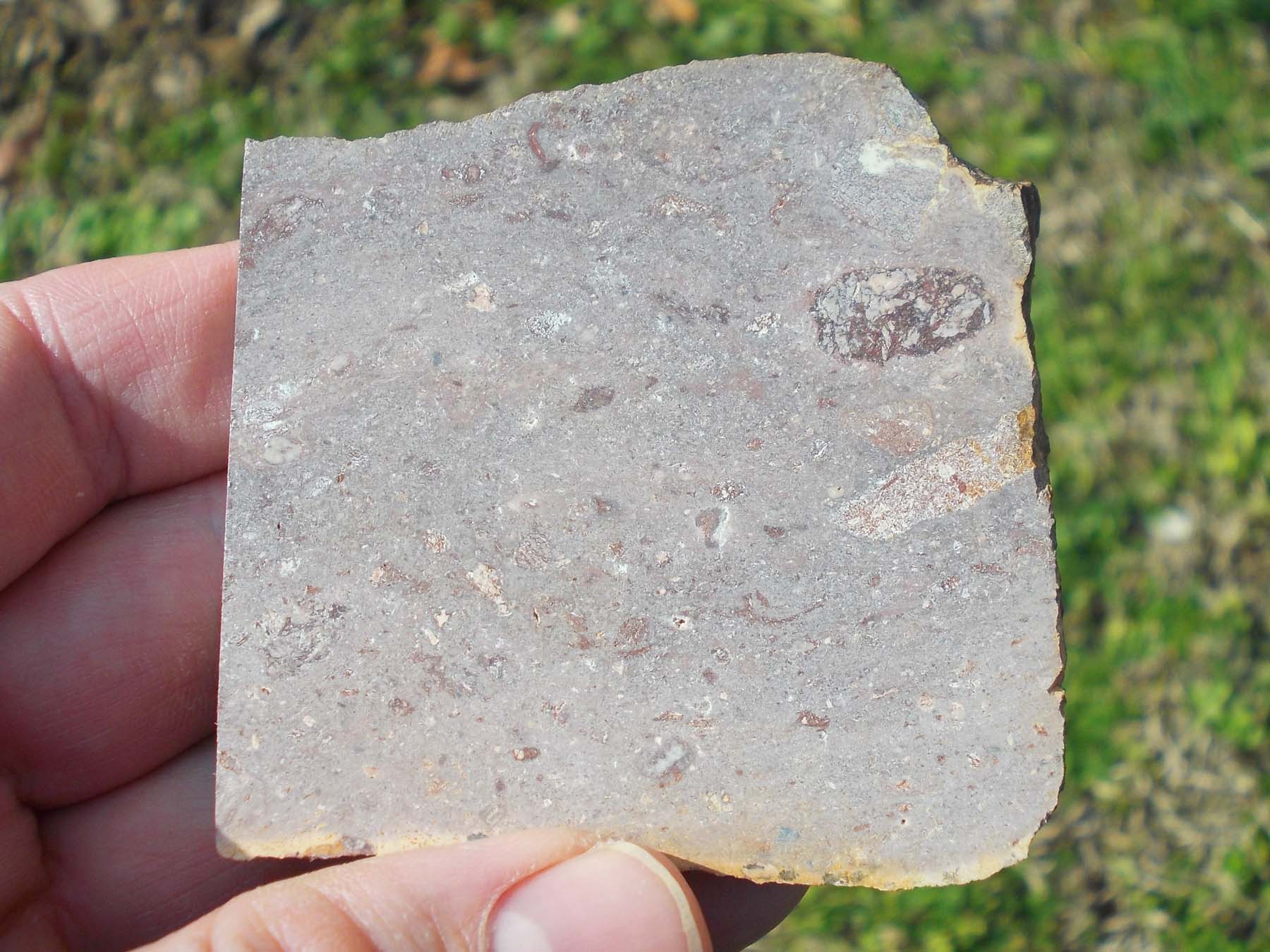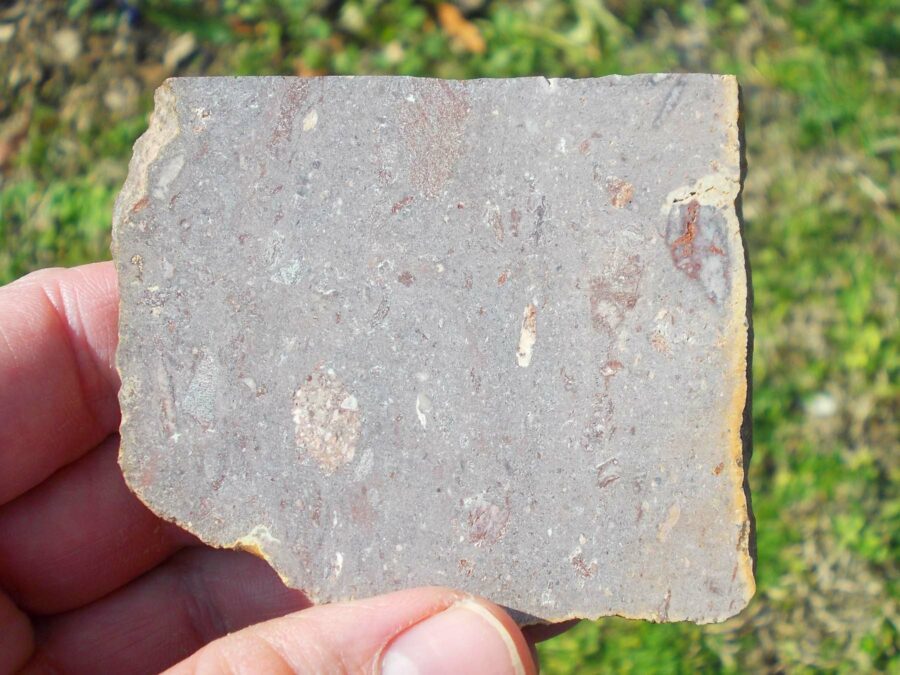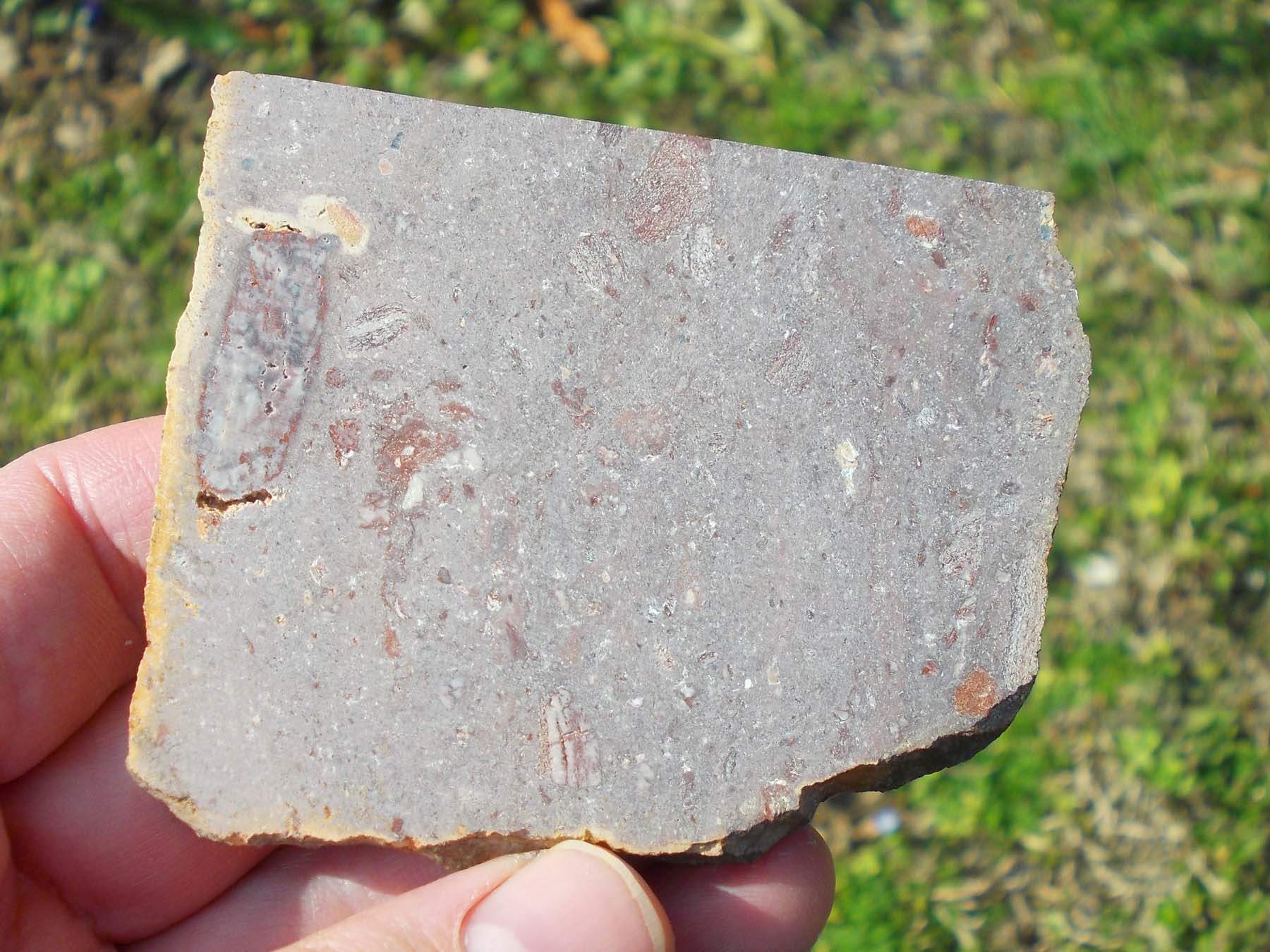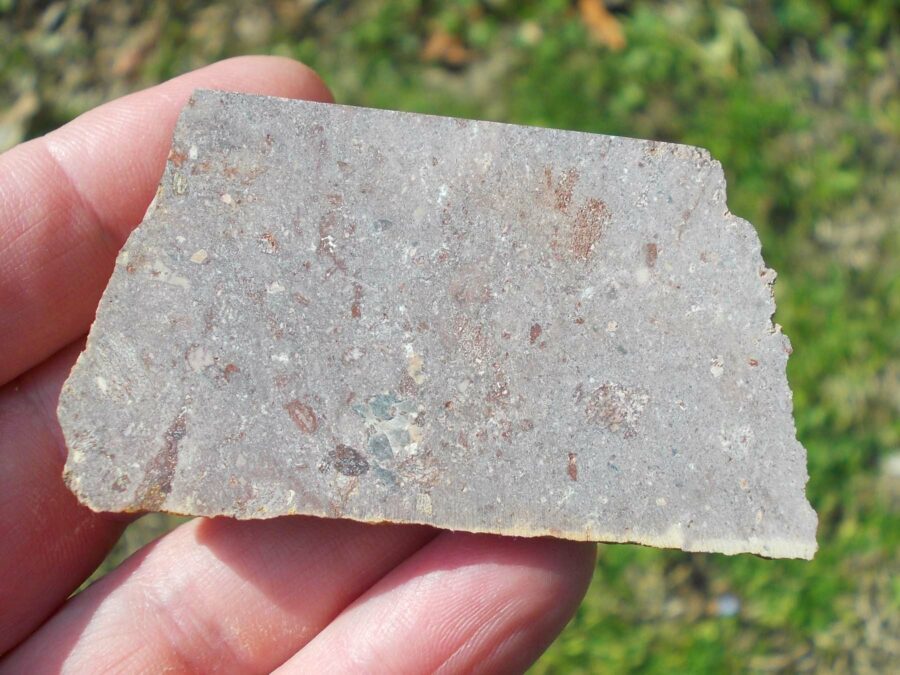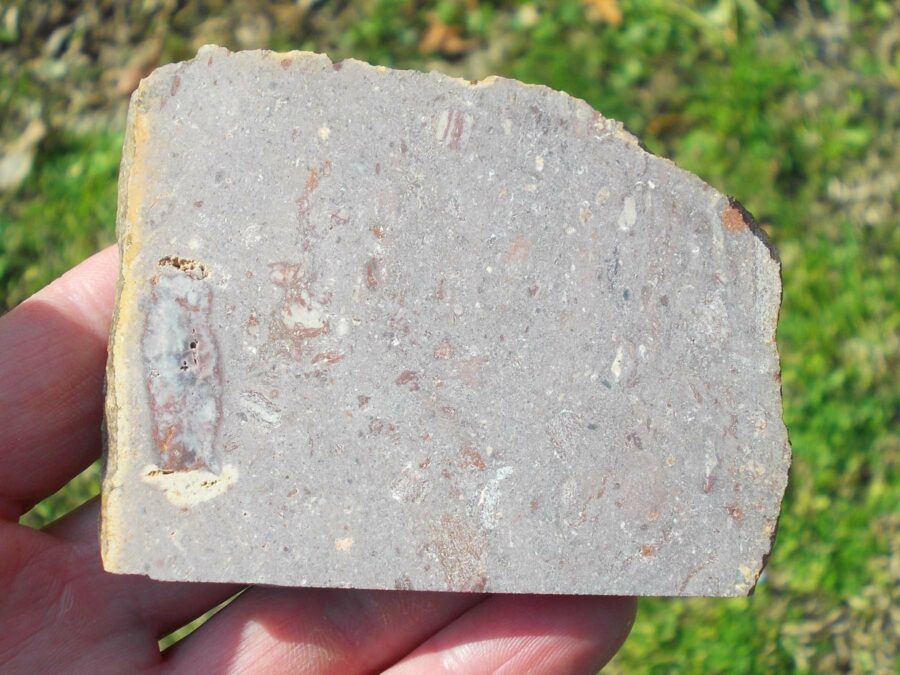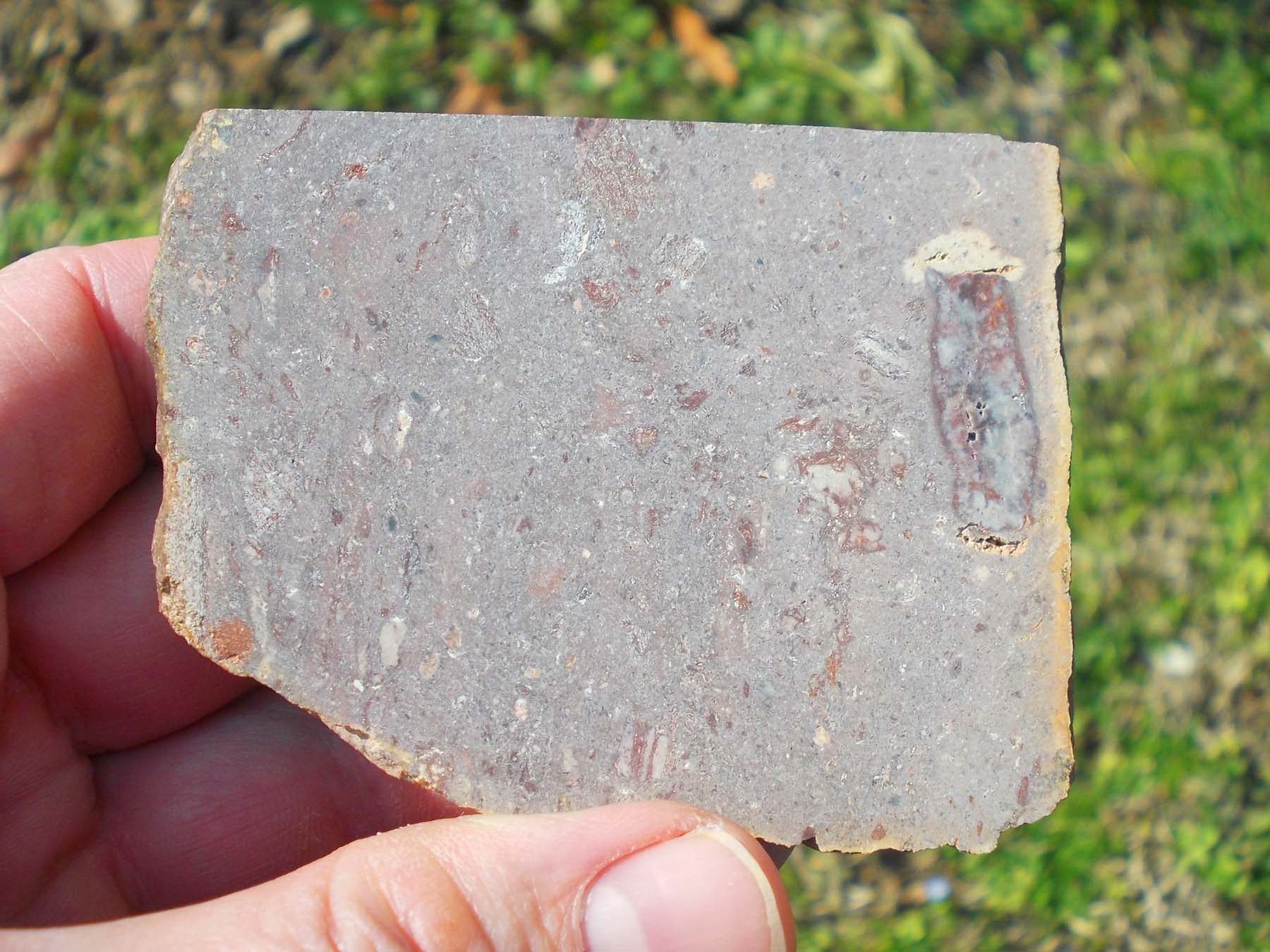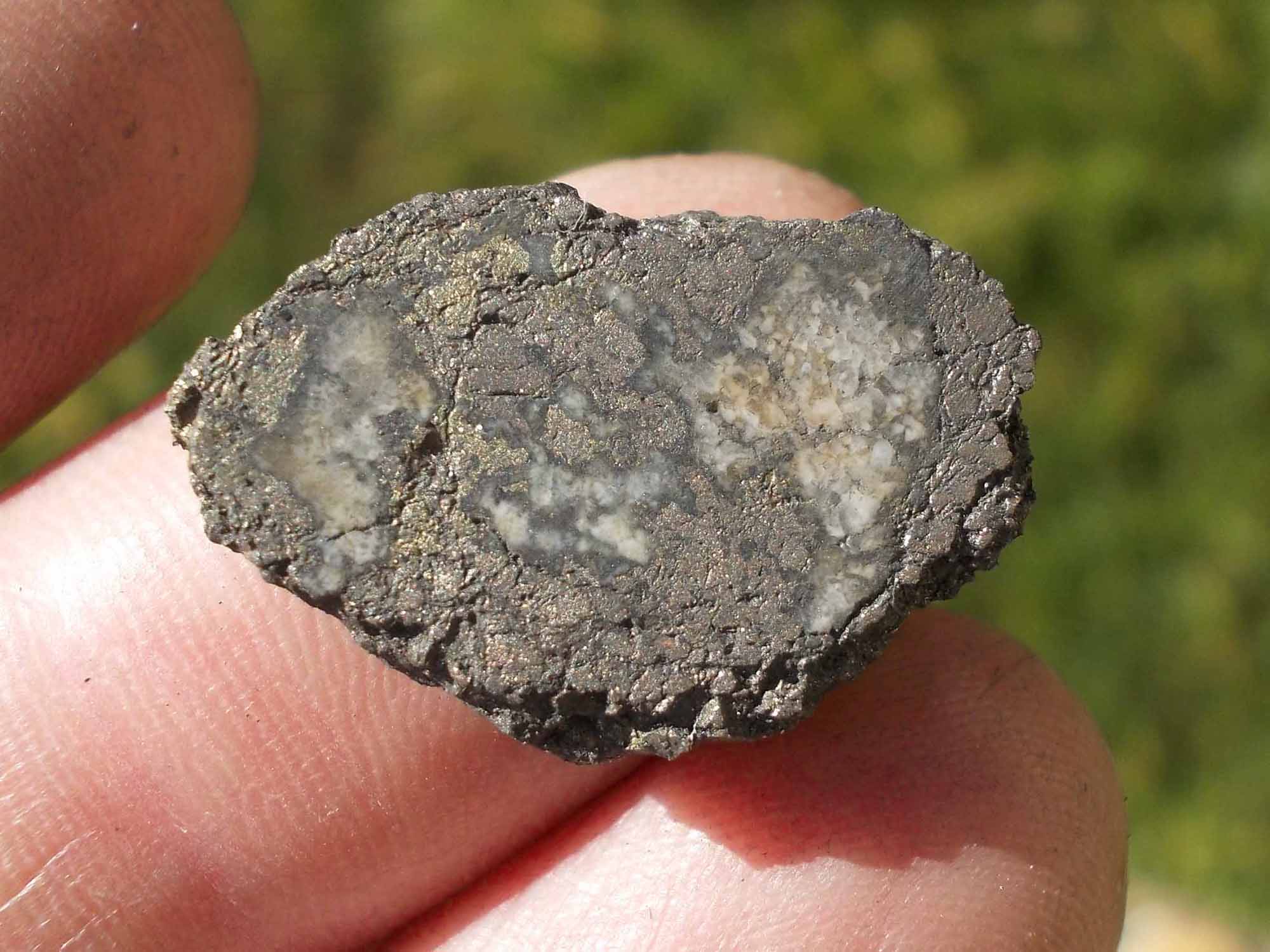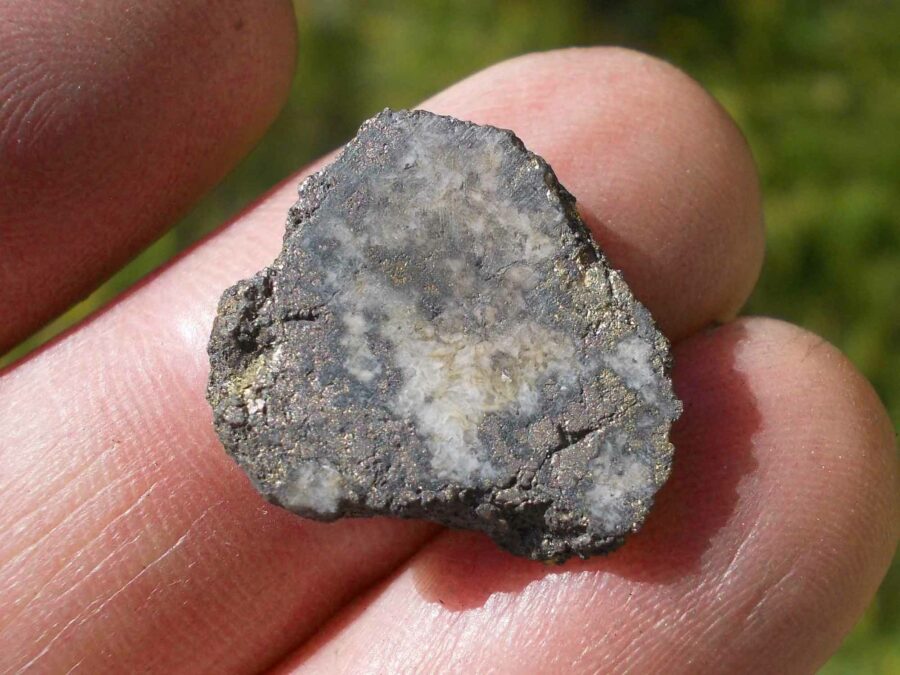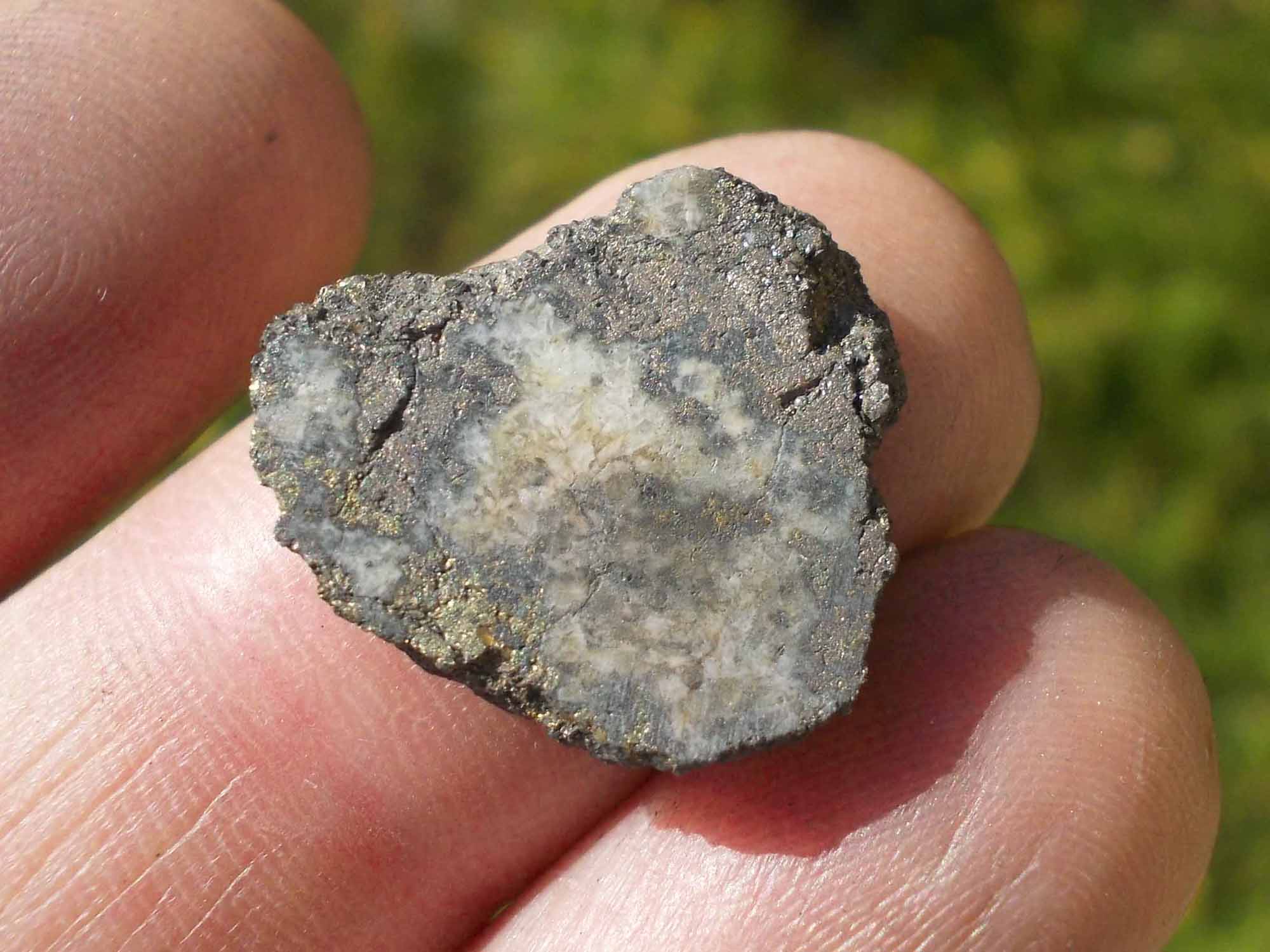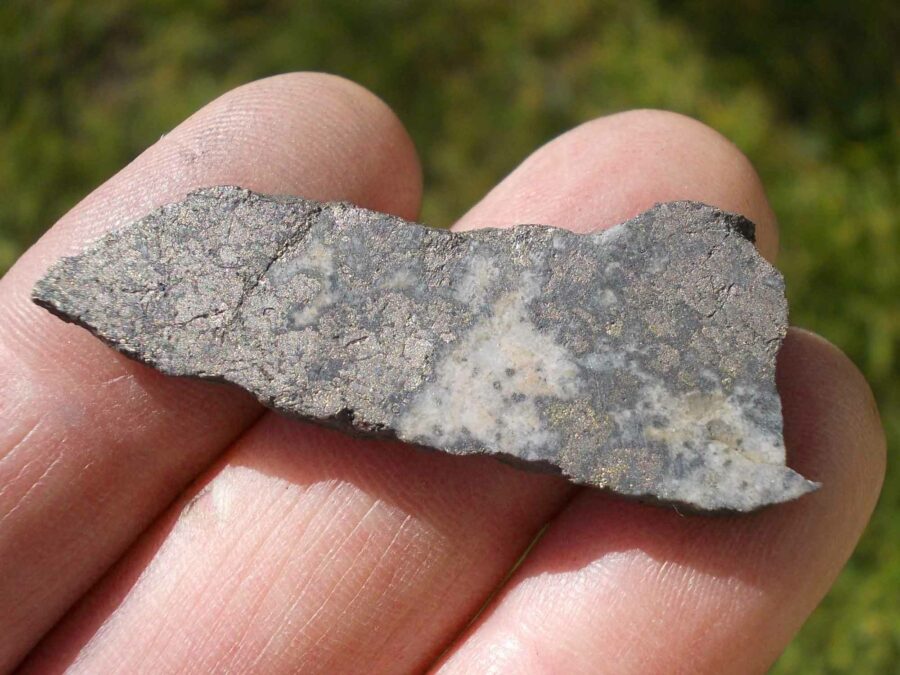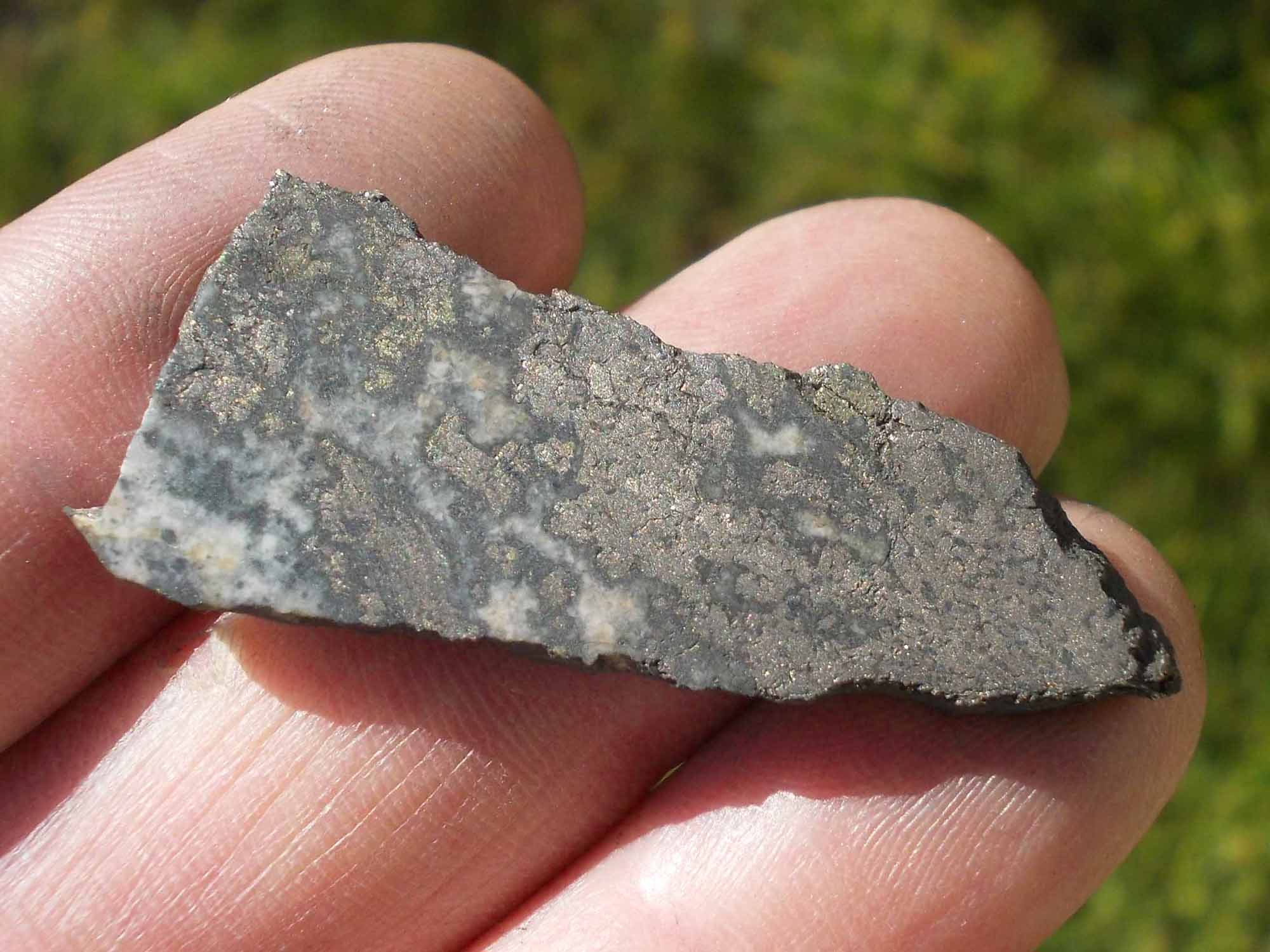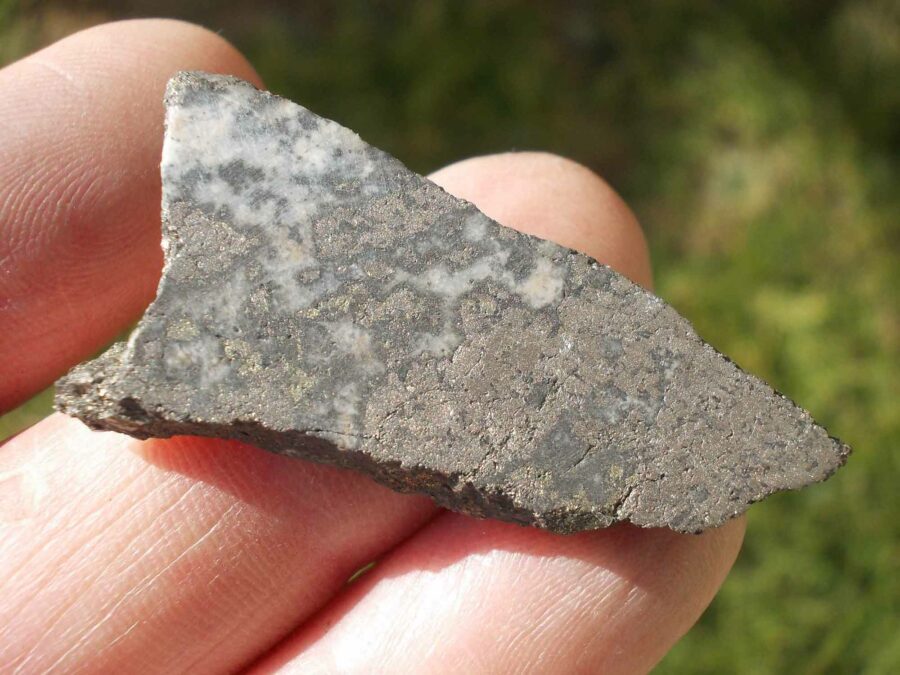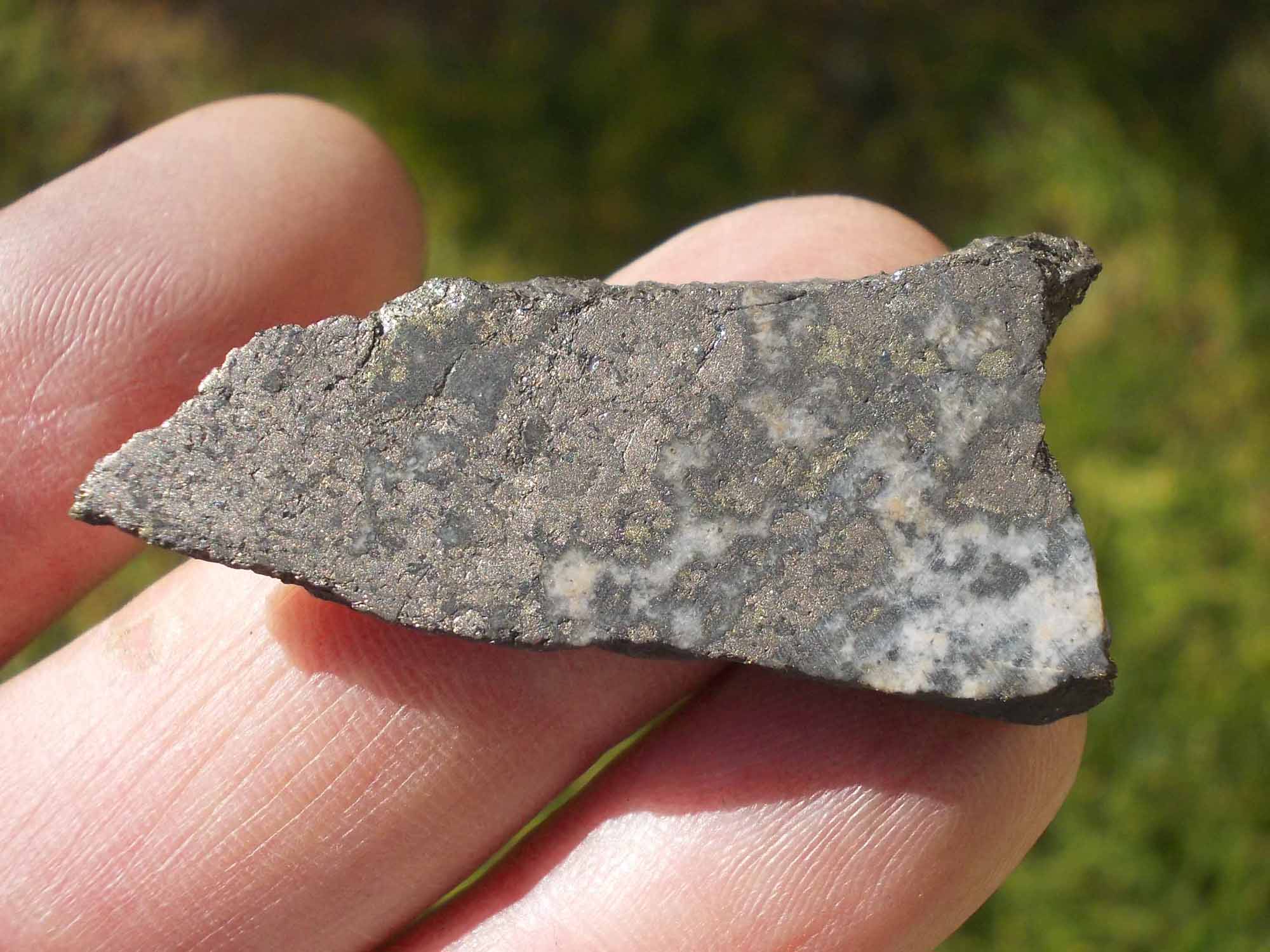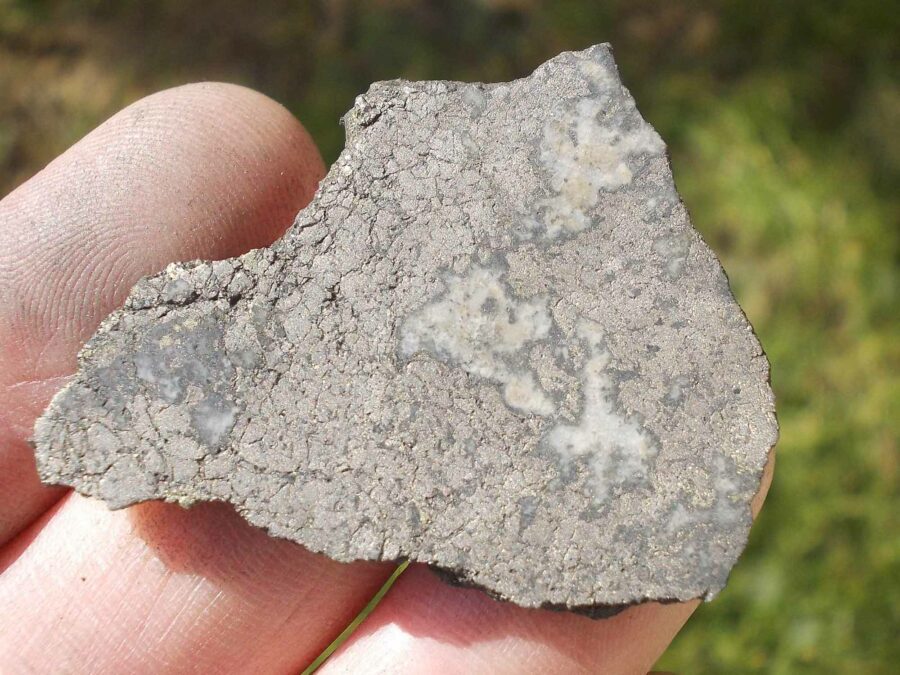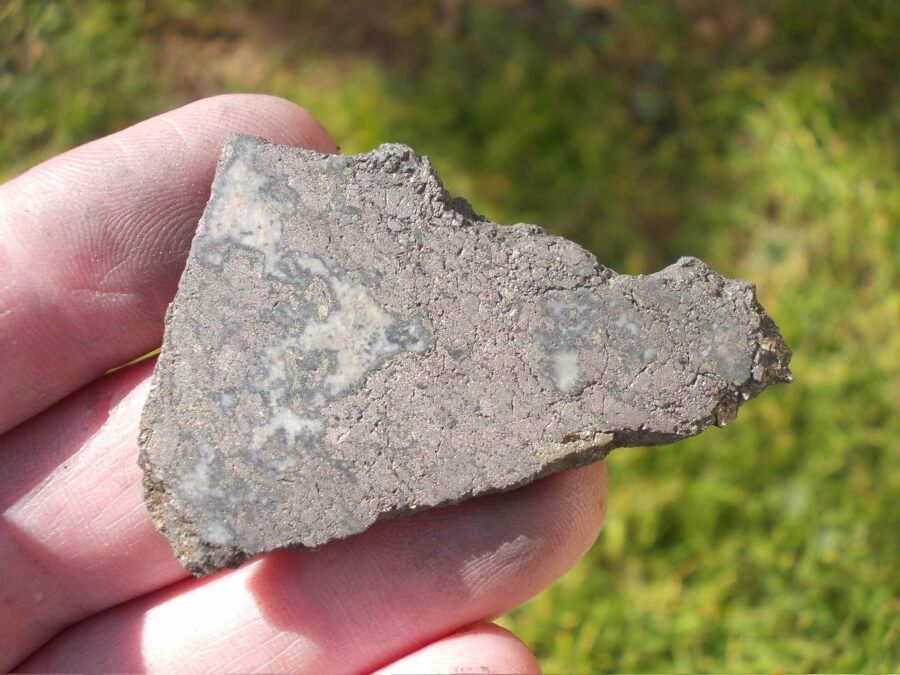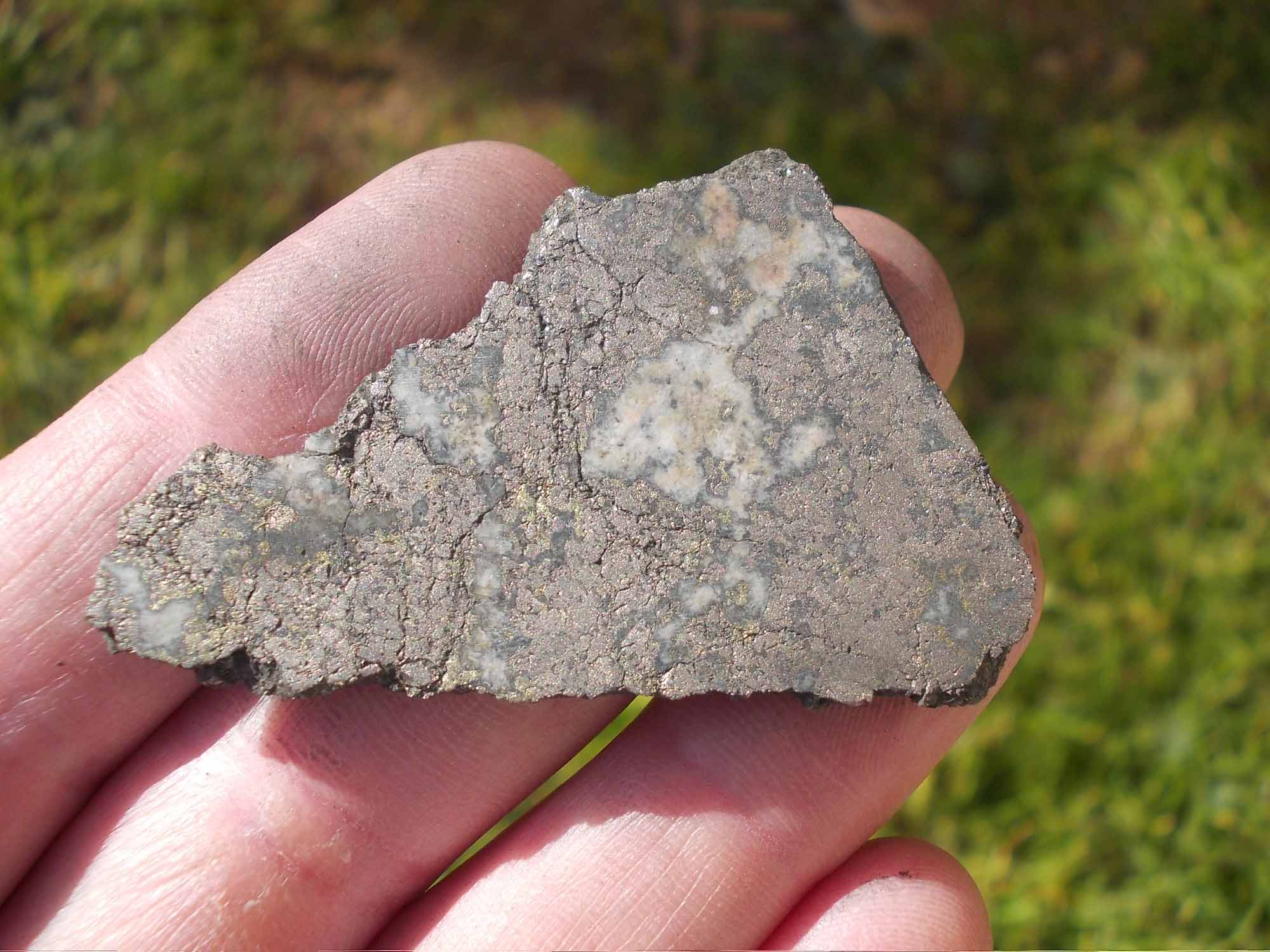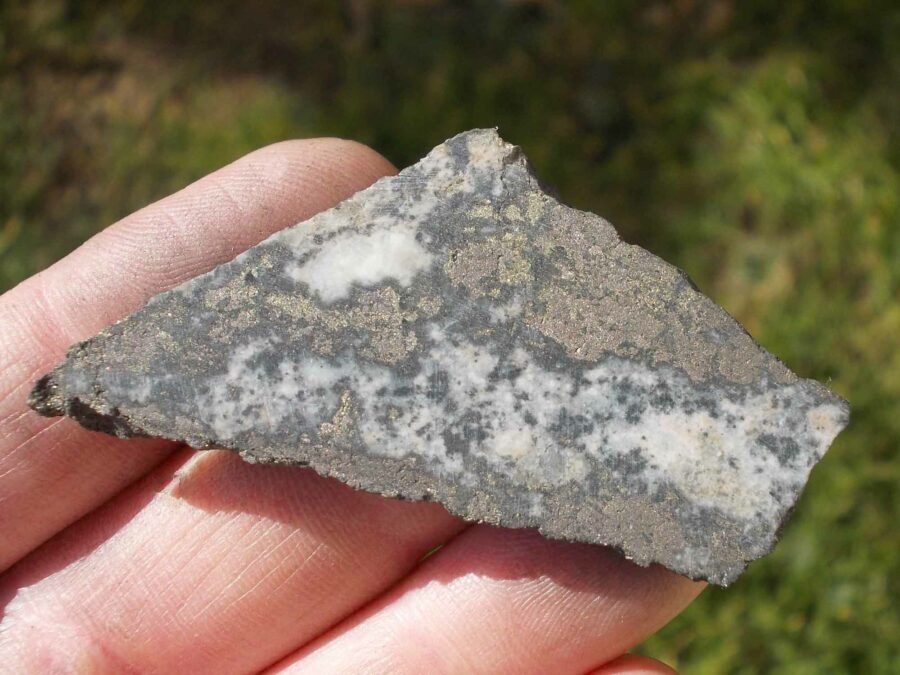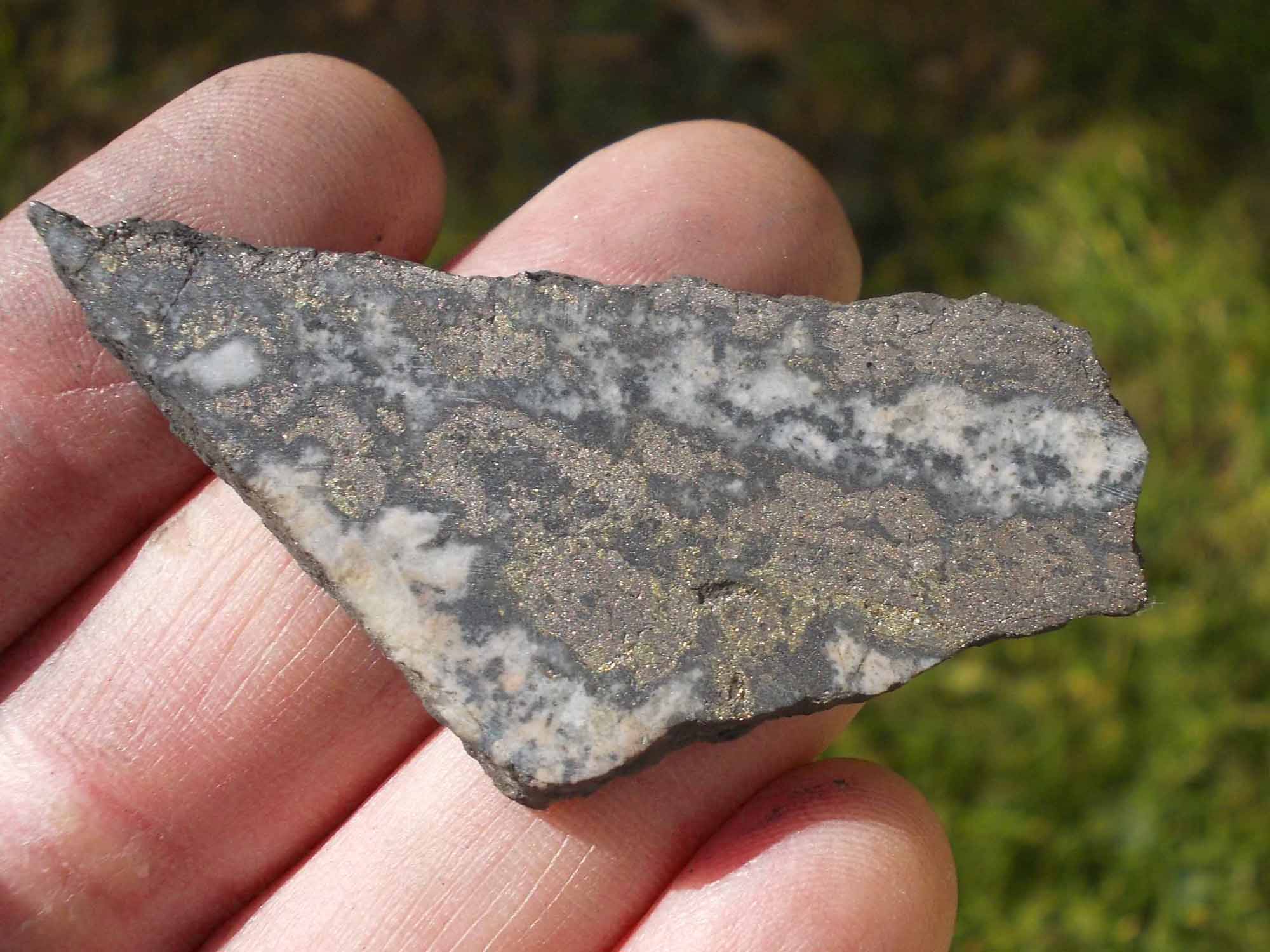Showing 55–72 of 111 resultsSorted by latest
16,80€
An impactite is a terrestrial rock modified by the impact of a large meteorite.
These rocks contain an agglomeration of fallout dust and fragments.
The Rochechouart impactites were formed as a result of a meteorite impact about 207 million years ago in New Aquitaine in the Rochechouart district.
The impact crater of the Rochechouart meteorite is called “Astroblème” because it is no longer visible following erosion.
There are several types of rocks :
Les brèches de type Babaudus, riche en verre à texture fluidale et en vacuoles
The “breccias” of Montoume type, red because of their richness in iron, metal supposed to come from the asteroid.
The “breccias” of Chassenon type, debris of glass of greenish tint.
The “breccias” of Rochechouart type, contain little glass and are constituted of elements of varied size and lithology.
7,20€
An impactite is a terrestrial rock modified by the impact of a large meteorite.
These rocks contain an agglomeration of fallout dust and fragments.
The Rochechouart impactites were formed as a result of a meteorite impact about 207 million years ago in New Aquitaine in the Rochechouart district.
The impact crater of the Rochechouart meteorite is called “Astroblème” because it is no longer visible following erosion.
There are several types of rocks :
Les brèches de type Babaudus, riche en verre à texture fluidale et en vacuoles
The “breccias” of Montoume type, red because of their richness in iron, metal supposed to come from the asteroid.
The “breccias” of Chassenon type, debris of glass of greenish tint.
The “breccias” of Rochechouart type, contain little glass and are constituted of elements of varied size and lithology.
10,80€
An impactite is a terrestrial rock modified by the impact of a large meteorite.
These rocks contain an agglomeration of fallout dust and fragments.
The Rochechouart impactites were formed as a result of a meteorite impact about 207 million years ago in New Aquitaine in the Rochechouart district.
The impact crater of the Rochechouart meteorite is called “Astroblème” because it is no longer visible following erosion.
There are several types of rocks :
Les brèches de type Babaudus, riche en verre à texture fluidale et en vacuoles
The “breccias” of Montoume type, red because of their richness in iron, metal supposed to come from the asteroid.
The “breccias” of Chassenon type, debris of glass of greenish tint.
The “breccias” of Rochechouart type, contain little glass and are constituted of elements of varied size and lithology.
16,80€
An impactite is a terrestrial rock modified by the impact of a large meteorite.
These rocks contain an agglomeration of fallout dust and fragments.
The Rochechouart impactites were formed as a result of a meteorite impact about 207 million years ago in New Aquitaine in the Rochechouart district.
The impact crater of the Rochechouart meteorite is called “Astroblème” because it is no longer visible following erosion.
There are several types of rocks :
Les brèches de type Babaudus, riche en verre à texture fluidale et en vacuoles
The “breccias” of Montoume type, red because of their richness in iron, metal supposed to come from the asteroid.
The “breccias” of Chassenon type, debris of glass of greenish tint.
The “breccias” of Rochechouart type, contain little glass and are constituted of elements of varied size and lithology.
18,00€
An impactite is a terrestrial rock modified by the impact of a large meteorite.
These rocks contain an agglomeration of fallout dust and fragments.
The Rochechouart impactites were formed as a result of a meteorite impact about 207 million years ago in New Aquitaine in the Rochechouart district.
The impact crater of the Rochechouart meteorite is called “Astroblème” because it is no longer visible following erosion.
There are several types of rocks :
Les brèches de type Babaudus, riche en verre à texture fluidale et en vacuoles
The “breccias” of Montoume type, red because of their richness in iron, metal supposed to come from the asteroid.
The “breccias” of Chassenon type, debris of glass of greenish tint.
The “breccias” of Rochechouart type, contain little glass and are constituted of elements of varied size and lithology.
13,20€
An impactite is a terrestrial rock modified by the impact of a large meteorite.
These rocks contain an agglomeration of fallout dust and fragments.
The Rochechouart impactites were formed as a result of a meteorite impact about 207 million years ago in New Aquitaine in the Rochechouart district.
The impact crater of the Rochechouart meteorite is called “Astroblème” because it is no longer visible following erosion.
There are several types of rocks :
Les brèches de type Babaudus, riche en verre à texture fluidale et en vacuoles
The “breccias” of Montoume type, red because of their richness in iron, metal supposed to come from the asteroid.
The “breccias” of Chassenon type, debris of glass of greenish tint.
The “breccias” of Rochechouart type, contain little glass and are constituted of elements of varied size and lithology.
14,40€
An impactite is a terrestrial rock modified by the impact of a large meteorite.
These rocks contain an agglomeration of fallout dust and fragments.
The Rochechouart impactites were formed as a result of a meteorite impact about 207 million years ago in New Aquitaine in the Rochechouart district.
The impact crater of the Rochechouart meteorite is called “Astroblème” because it is no longer visible following erosion.
There are several types of rocks :
Les brèches de type Babaudus, riche en verre à texture fluidale et en vacuoles
The “breccias” of Montoume type, red because of their richness in iron, metal supposed to come from the asteroid.
The “breccias” of Chassenon type, debris of glass of greenish tint.
The “breccias” of Rochechouart type, contain little glass and are constituted of elements of varied size and lithology.
12,00€
An impactite is a terrestrial rock modified by the impact of a large meteorite.
These rocks contain an agglomeration of fallout dust and fragments.
The Rochechouart impactites were formed as a result of a meteorite impact about 207 million years ago in New Aquitaine in the Rochechouart district.
The impact crater of the Rochechouart meteorite is called “Astroblème” because it is no longer visible following erosion.
There are several types of rocks :
Les brèches de type Babaudus, riche en verre à texture fluidale et en vacuoles
The “breccias” of Montoume type, red because of their richness in iron, metal supposed to come from the asteroid.
The “breccias” of Chassenon type, debris of glass of greenish tint.
The “breccias” of Rochechouart type, contain little glass and are constituted of elements of varied size and lithology.
12,00€
An impactite is a terrestrial rock modified by the impact of a large meteorite.
These rocks contain an agglomeration of fallout dust and fragments.
The Rochechouart impactites were formed as a result of a meteorite impact about 207 million years ago in New Aquitaine in the Rochechouart district.
The impact crater of the Rochechouart meteorite is called “Astroblème” because it is no longer visible following erosion.
There are several types of rocks :
Les brèches de type Babaudus, riche en verre à texture fluidale et en vacuoles
The “breccias” of Montoume type, red because of their richness in iron, metal supposed to come from the asteroid.
The “breccias” of Chassenon type, debris of glass of greenish tint.
The “breccias” of Rochechouart type, contain little glass and are constituted of elements of varied size and lithology.
6,00€
An impactite is a terrestrial rock modified by the impact of a large meteorite.
These rocks contain an agglomeration of fallout dust and fragments.
The Rochechouart impactites were formed as a result of a meteorite impact about 207 million years ago in New Aquitaine in the Rochechouart district.
The impact crater of the Rochechouart meteorite is called “Astroblème” because it is no longer visible following erosion.
There are several types of rocks :
Les brèches de type Babaudus, riche en verre à texture fluidale et en vacuoles
The “breccias” of Montoume type, red because of their richness in iron, metal supposed to come from the asteroid.
The “breccias” of Chassenon type, debris of glass of greenish tint.
The “breccias” of Rochechouart type, contain little glass and are constituted of elements of varied size and lithology.
18,00€
An impactite is a terrestrial rock modified by the impact of a large meteorite.
These rocks contain an agglomeration of fallout dust and fragments.
The Rochechouart impactites were formed as a result of a meteorite impact about 207 million years ago in New Aquitaine in the Rochechouart district.
The impact crater of the Rochechouart meteorite is called “Astroblème” because it is no longer visible following erosion.
There are several types of rocks :
Les brèches de type Babaudus, riche en verre à texture fluidale et en vacuoles
The “breccias” of Montoume type, red because of their richness in iron, metal supposed to come from the asteroid.
The “breccias” of Chassenon type, debris of glass of greenish tint.
The “breccias” of Rochechouart type, contain little glass and are constituted of elements of varied size and lithology.
15,60€
The Sudbury Basin is an enormous structure 62 km long, 32 km wide and 15 km deep. This basin was formed after the impact of a meteorite, certainly a comet of about 10 to 15 km in diameter, 1.849 billion years ago.
It is the 2nd largest impact in the world.
14,40€
The Sudbury Basin is an enormous structure 62 km long, 32 km wide and 15 km deep. This basin was formed after the impact of a meteorite, certainly a comet of about 10 to 15 km in diameter, 1.849 billion years ago.
It is the 2nd largest impact in the world.
33,60€
The Sudbury Basin is an enormous structure 62 km long, 32 km wide and 15 km deep. This basin was formed after the impact of a meteorite, certainly a comet of about 10 to 15 km in diameter, 1.849 billion years ago.
It is the 2nd largest impact in the world.
36,00€
The Sudbury Basin is an enormous structure 62 km long, 32 km wide and 15 km deep. This basin was formed after the impact of a meteorite, certainly a comet of about 10 to 15 km in diameter, 1.849 billion years ago.
It is the 2nd largest impact in the world.
58,80€
The Sudbury Basin is an enormous structure 62 km long, 32 km wide and 15 km deep. This basin was formed after the impact of a meteorite, certainly a comet of about 10 to 15 km in diameter, 1.849 billion years ago.
It is the 2nd largest impact in the world.
63,60€
The Sudbury Basin is an enormous structure 62 km long, 32 km wide and 15 km deep. This basin was formed after the impact of a meteorite, certainly a comet of about 10 to 15 km in diameter, 1.849 billion years ago.
It is the 2nd largest impact in the world.
62,40€
The Sudbury Basin is an enormous structure 62 km long, 32 km wide and 15 km deep. This basin was formed after the impact of a meteorite, certainly a comet of about 10 to 15 km in diameter, 1.849 billion years ago.
It is the 2nd largest impact in the world.


